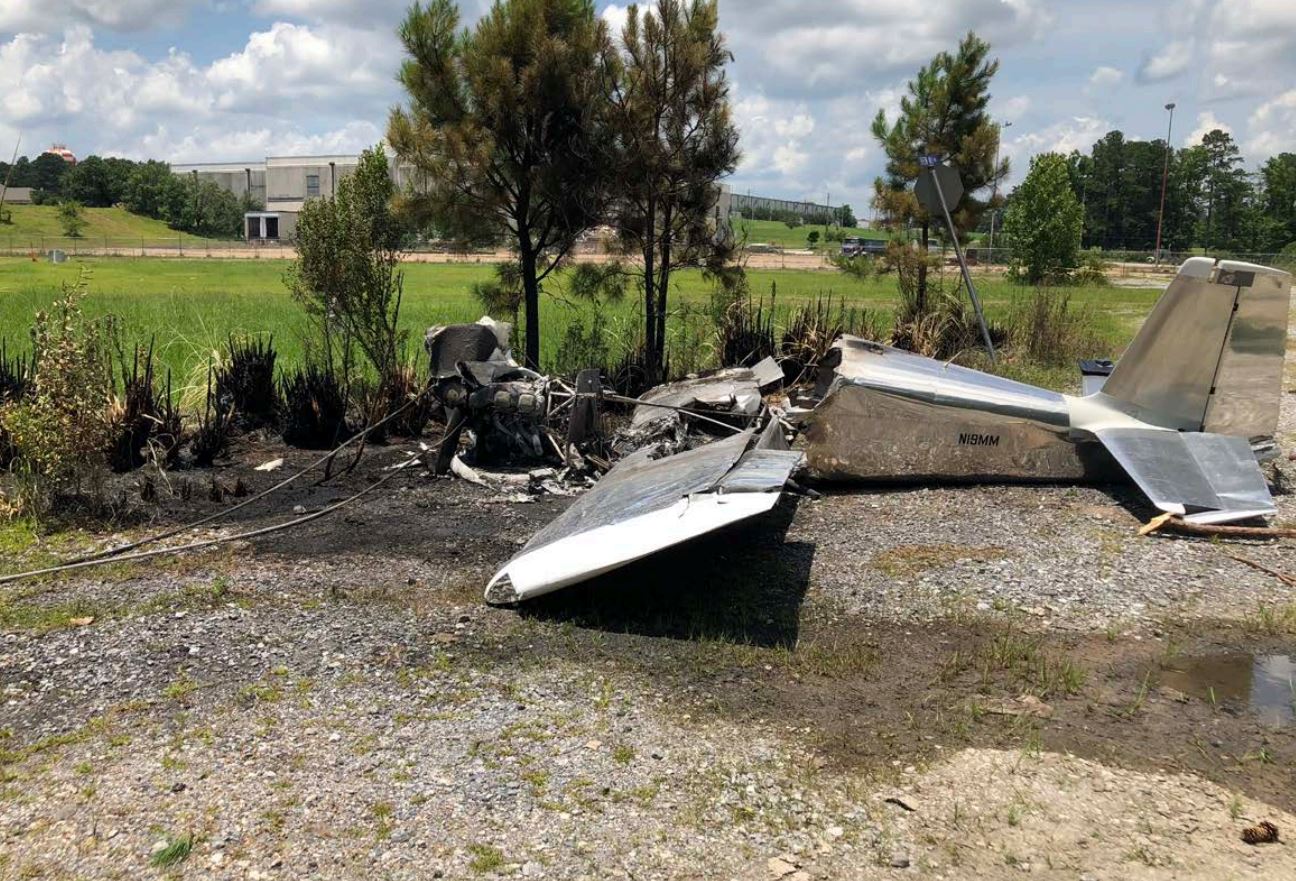
ASN Wikibase Occurrence # 212601
This information is added by users of ASN. Neither ASN nor the Flight Safety Foundation are responsible for the completeness or correctness of this information.
If you feel this information is incomplete or incorrect, you can submit corrected information.
| Date: | Sunday 24 June 2018 |
| Time: | 09:20 |
| Type: |  Van's RV-7A |
| Owner/operator: | Private |
| Registration: | N19MM |
| MSN: | 72545 |
| Year of manufacture: | 2017 |
| Engine model: | Lycoming YIO-360-M1B |
| Fatalities: | Fatalities: 0 / Occupants: 2 |
| Aircraft damage: | Destroyed |
| Category: | Accident |
| Location: | Tallapoosa County, Alexander City, AL -
 United States of America United States of America
|
| Phase: | Landing |
| Nature: | Private |
| Departure airport: | Atlanta-Peachtree City Falcon Field, GA (KFFC) |
| Alexander City-Thomas C Russell Field, AL (ALX/KALX) | |
| Investigating agency: | NTSB |
| Confidence Rating: |
The airline transport pilot reported that the accident flight was the first flight in the airplane since he thought the condition inspection was completed. He found out after the accident that the mechanic had not completed the condition inspection nor signed off the maintenance logbook. The mechanic reported that he still had several questions that needed to be answered.
The pilot stated that he took off for the personal, cross-country flight and then flew the airplane for 45 minutes. He added that, when the airplane reached 2,000 ft above ground level and he reduced the throttle, the engine “popped” twice and then lost all power. He looked at the fuel gauges, verified that sufficient fuel was onboard, and switched the selector valve to the other tank. The pilot did not believe that the airplane could glide to the runway at the destination airport, so he chose to land the airplane in a field. During the approach, the airplane impacted tree tops and power lines and then terrain. A postcrash fire ensued, which consumed most of the cockpit and forward portion of the airframe.
Examination of the engine, which exhibited fire damage but was intact, revealed no evidence of any preimpact mechanical malfunctions or failures that would have precluded normal operation. The reason for the loss of engine power could not be determined.
Probable Cause: A total loss of engine power for reasons that could not be determined because examination of the engine revealed no evidence of any preimpact mechanical malfunctions or failures that would have precluded normal operation.
Accident investigation:
 |
|
Sources:
NTSB
Location
Images:

Photo: NTSB
Revision history:
| Date/time | Contributor | Updates |
|---|---|---|
| 24-Jun-2018 17:21 | gerard57 | Added |
| 24-Jun-2018 18:27 | Geno | Updated [Time, Location, Phase, Source, Narrative] |
| 25-Jun-2018 05:00 | Geno | Updated [Aircraft type, Registration, Cn, Departure airport, Destination airport, Source, Narrative] |
| 25-Jun-2018 06:03 | Captain Adam | Updated [Aircraft type, Registration, Cn, Source] |
| 25-Jun-2018 18:09 | Aerossurance | Updated [Time, Source, Narrative] |
| 01-May-2019 09:17 | ASN Update Bot | Updated [Time, Departure airport, Destination airport, Source, Narrative, Accident report, ] |
| 01-May-2019 14:25 | harro | Updated [Departure airport, Destination airport, Source, Narrative, Photo] |
Corrections or additions? ... Edit this accident description
The Aviation Safety Network is an exclusive service provided by:


 ©2024 Flight Safety Foundation
©2024 Flight Safety Foundation